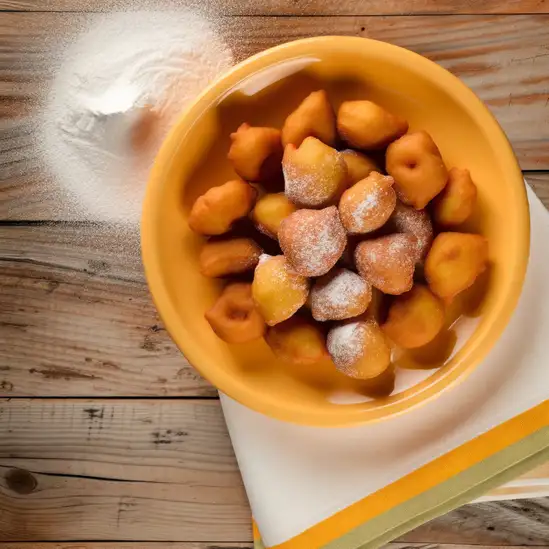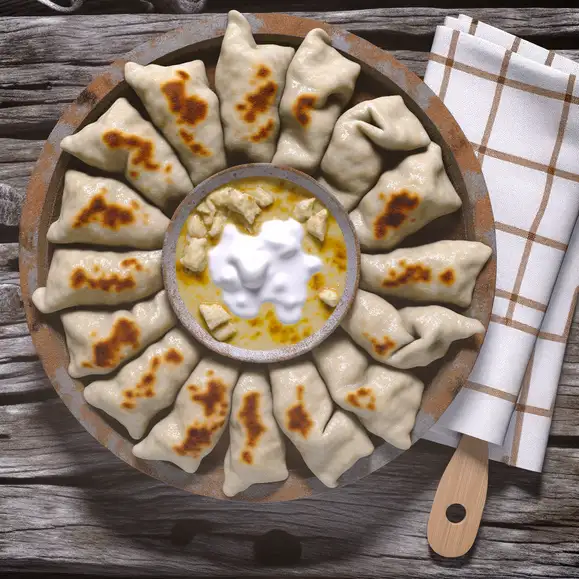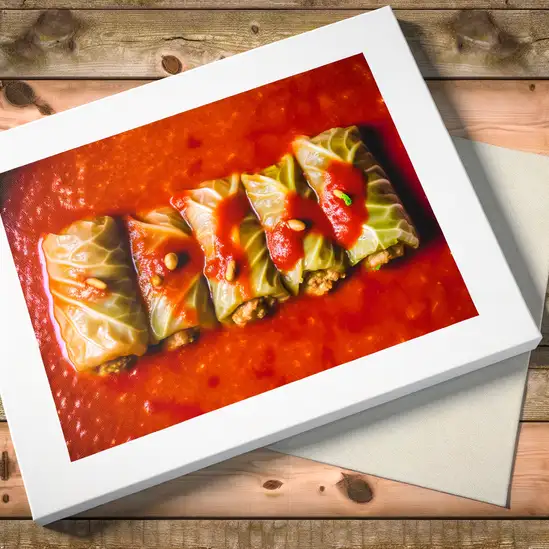



If you find yourself wandering through Jankomir,you’ll quickly notice it’s a place where the pulse of everyday life hums with a quiet,unpretentious energy. It’s not the kind of spot that shouts for attention,but rather one that invites you to slow down and soak in the subtle rhythms of a community that’s both grounded and welcoming. The streets are lined with a mix of modern buildings and cozy,lived-in homes,where the scent of fresh bread from local bakeries mingles with the earthy aroma of nearby green spaces. It’s a neighborhood that feels like a warm embrace,where people greet each other with genuine smiles and the occasional friendly nod. Walking through Jankomir,you’ll catch the sounds of children playing in parks,the distant hum of trams,and the occasional clink of coffee cups from small cafés tucked into quiet corners. The vibe here is refreshingly authentic—no tourist traps,just real life unfolding in a way that’s both comforting and intriguing. If you’re a fan of exploring places where culture is lived rather than performed,Jankomir offers a glimpse into the everyday Croatian spirit,with its blend of tradition and modernity. What really makes Jankomir stand out is its balance:the convenience of city life paired with pockets of calm where you can breathe and watch the world go by. Grab a coffee,find a bench in one of the leafy parks,and just be. It’s a spot that invites you to experience Croatia beyond the usual sights,to feel its heartbeat in the simple,beautiful moments of daily life.
The information on this page is currently being reviewed by Tripkliq and should be used as a guide only
Eng word: Hello
Eng pronunciation: Bohk
Local language: Bok
Eng word: Goodbye
Eng pronunciation: Doh-vee-jen-ya
Local language: Doviđenja
Eng word: Thank you
Eng pronunciation: Hvah-lah
Local language: Hvala
Eng word: How much
Eng pronunciation: Koh-lee-koh
Local language: Koliko
Eng word: Toilet
Eng pronunciation: Toh-ah-let
Local language: Toalet
Eng word: Help me
Eng pronunciation: Poh-moh-zee mee
Local language: Pomozi mi
Eng word: Yes
Eng pronunciation: Dah
Local language: Da
Eng word: No
Eng pronunciation: Neh
Local language: Ne
Eng word: Excuse me
Eng pronunciation: Oh-proh-stee-teh
Local language: Oprostite
Jankomir, located in the western part of Zagreb, was historically a small rural settlement known for its agricultural roots. It played a key role in supplying fresh produce to the nearby city of Zagreb.
The Jankomir Bridge, built over the Sava River, is a vital infrastructure piece connecting the western parts of Zagreb to other regions. It has become a symbol of modern development in the area.
During the 20th century, Jankomir became an important industrial zone, contributing to Zagreb's economic expansion. Factories and warehouses were established, creating jobs and boosting the local economy.
Jankomir is home to some of Zagreb's largest shopping centers, such as City Center One West. These centers have transformed the area into a popular destination for shopping and leisure activities.
Despite its industrial and commercial development, Jankomir has preserved green spaces and parks, offering residents and visitors a chance to enjoy nature and outdoor activities.
The Jankomir Psychiatric Hospital, established in the mid-20th century, is one of Croatia's leading mental health institutions, known for its compassionate care and innovative treatments.
Jankomir's location near the Sava River has historically made it an important area for trade and transportation, as well as a scenic spot for relaxation and recreation.
Over the years, Jankomir has become a melting pot of cultures, with people from various backgrounds contributing to its vibrant community and cultural richness.
Jankomir is well-connected to Zagreb's public transport network, making it easily accessible for tourists and locals alike. The area serves as a key transit hub for the western part of the city.
In Jankomir, the most common Power Adaptor is Type C, Type F.



A slow-cooked dish made with meat and vegetables, prepared under a bell-like lid covered with embers, resulting in tender and flavorful food.

Small, sweet doughnuts flavored with citrus and often sprinkled with powdered sugar, commonly enjoyed during festive seasons.

A traditional Croatian dish made of dough filled with cheese, often served baked or boiled, and sometimes topped with sour cream.

Cabbage rolls stuffed with minced meat and rice, cooked in a savory tomato sauce, popular during winter months.

A rich beef stew marinated in vinegar and spices, slow-cooked with prunes and served with gnocchi or pasta.
If you ever find yourself wandering through Split,it’s like stepping into a living,breathing storybook where ancient history and vibrant modern life dance together effortlessly. The moment you stroll along the Riva promenade,the salty breeze from the Adriatic mingles with the aroma of fresh espresso and grilled seafood wafting from nearby cafés. Locals chat animatedly in the sun-dappled squares,their laughter blending with the distant hum of boats bobbing gently in the harbor. There’s a laid-back energy here that feels both timeless and alive,inviting you to slow down and soak it all in.
Split’s heart beats strongest in Diocletian’s Palace,a sprawling Roman fortress that’s less a museum and more a neighborhood where people live,shop,and gather. Walking through its ancient stone alleys,you’ll catch glimpses of colorful markets,artisan shops,and cozy taverns tucked into centuries-old walls. At night,the city transforms as lanterns flicker on,and the sound of live klapa singing—traditional a cappella harmonies—drifts through the air,wrapping you in a warm,soulful embrace.
What really makes Split unforgettable is how effortlessly it blends the old with the new. You can savor a plate of fresh octopus salad while watching fishermen haul in their catch,then wander to a rooftop bar for a cocktail as the sun sets behind the islands. It’s a place where every corner tells a story,every meal feels like a celebration,and every moment invites you to become part of its ongoing tale.
If you ever find yourself wandering through the sun-drenched streets of Dubrovnik,you’ll immediately feel like you’ve stepped into a living storybook. The city’s ancient stone walls rise proudly against the sparkling Adriatic,and as you stroll along the marble-paved Stradun,the salty sea breeze mingles with the scent of fresh pine and blooming bougainvillea. There’s a rhythm here—a gentle hum of life where history and modern charm dance together effortlessly.
Dubrovnik’s character is woven into every corner:the clatter of café cups,the murmur of locals chatting in cozy taverns,and the distant call of seagulls overhead. You can almost taste the city in the air—briny and fresh,with hints of grilled seafood and ripe figs from the markets. Sitting at a seaside restaurant,watching the sun dip behind the fortress walls,you’ll savor dishes bursting with Mediterranean flavors,paired with a glass of crisp Croatian white wine.
What makes Dubrovnik truly special is how it balances its rich past with a vibrant present. The city’s narrow alleys invite exploration,revealing tucked-away galleries,artisan shops,and lively squares where music spills out into the streets. Whether you’re tracing the footsteps of ancient mariners or simply soaking up the golden light on a quiet terrace,Dubrovnik feels like a warm embrace—inviting,timeless,and utterly unforgettable.
If you ever find yourself wandering the Dalmatian coast,Zadar is one of those places that sneaks up on you with its quiet charm and unexpected magic. The moment you step onto its ancient stone streets,there’s this warm,timeless feeling—like the city is gently humming a tune just for you. The salty breeze from the Adriatic mingles with the scent of fresh pine and blooming jasmine,wrapping around you as you stroll along the waterfront. It’s a place where history isn’t just in museums; it’s alive in the crumbling Roman ruins,the medieval churches,and the lively squares where locals gather to chat and sip coffee.
What really sets Zadar apart is its playful spirit. You’ll hear it in the waves as they dance through the Sea Organ,an extraordinary installation that turns the sea’s movement into haunting melodies. And just a few steps away,the Sun Salutation lights up the night with a mesmerizing display of colors,making the waterfront feel like a celebration of nature and art. Grab a seat on the stone benches,watch the sun dip below the horizon,and you’ll understand why Alfred Hitchcock once called Zadar the most beautiful sunset in the world.
The city’s vibe is relaxed but vibrant,with cozy konobas serving up fresh seafood and local wines that taste like the essence of the region. Whether you’re wandering through the bustling market,exploring narrow alleys,or simply soaking in the views from a café terrace,Zadar invites you to slow down,breathe deeply,and savor every moment.
If you ever find yourself wandering the sun-drenched coast of Croatia,Pula is the kind of place that wraps around you like a warm,familiar blanket. There’s this effortless charm in the air—ancient stone walls bathed in golden light,the salty breeze carrying the distant hum of boats and laughter from seaside cafes. Walking through Pula feels like stepping into a living history book,but one that’s vibrantly alive with locals chatting over espresso and the clinking of glasses filled with crisp,local wine.
The city’s Roman amphitheater is impossible to miss,standing proudly as a testament to centuries past,yet it pulses with modern energy during summer concerts and festivals. Strolling through the narrow streets,you’ll catch the scent of fresh seafood grilling nearby,mingling with the earthy aroma of pine trees from the surrounding hills. It’s a place where time slows just enough for you to savor a plate of black risotto or sip on a cold craft beer while watching the sun dip into the Adriatic.
What really makes Pula special is its blend of rugged coastal beauty and warm,unpretentious spirit. The locals have a relaxed vibe,welcoming you with genuine smiles and stories about their city’s layered past. Whether you’re exploring Roman ruins,lounging on a pebble beach,or simply people-watching in a bustling square,Pula invites you to soak in its rich culture and easygoing rhythm. It’s a city that stays with you long after you’ve left,whispering tales of history,sea,and sun.
If you wander into Rijeka,you’ll immediately feel its pulse—a lively,salty breeze mingling with the hum of a bustling port city that’s unapologetically itself. It’s not polished like some of Croatia’s more famous coastal towns,but that’s exactly what makes it so magnetic. The streets buzz with a mix of locals chatting over coffee,the clatter of trams,and the occasional distant call of seagulls. You can almost taste the sea in the air,a briny freshness that pairs perfectly with a glass of local Malvazija wine at a cozy café.
Rijeka wears its history on its sleeve,from the grand Austro-Hungarian architecture to the colorful street art that pops up in unexpected corners. The city’s character is a blend of old-world charm and modern creativity,with a vibrant arts scene that spills into its festivals and galleries. Strolling along the waterfront,you’ll catch fishermen unloading their catch,the scent of grilled fish wafting from nearby taverns,and the laughter of families enjoying the evening.
What really sticks with you is Rijeka’s warmth—people here are genuine,proud of their city’s quirks and stories. Whether you’re exploring the lively market,climbing up to Trsat Castle for sweeping views,or simply soaking in the rhythm of the harbor,Rijeka invites you to slow down and savor its unique blend of sea,culture,and everyday life. It’s a place that feels like a well-kept secret,but one you’ll want to shout about once you’ve been.
If you wander into Šibenik,you’ll immediately feel like you’ve stepped into a place where history and the sea have been quietly chatting for centuries. The city’s old stone streets,worn smooth by footsteps over hundreds of years,invite you to slow down and soak in the atmosphere. There’s a gentle hum of life here—fishermen unloading their catch,the clinking of glasses from cozy waterfront cafés,and the distant call of seagulls mingling with the soft splash of waves against the harbor walls.
What makes Šibenik truly special is its blend of rugged Adriatic charm and rich cultural layers. The sun warms the limestone walls,making them glow golden in the late afternoon,while the scent of pine trees drifts in from the nearby hills. You can’t miss the stunning Cathedral of St. James,a masterpiece carved entirely from stone,where every detail tells a story. Wander through the narrow alleys,and you’ll find vibrant markets bursting with fresh figs,olives,and local cheeses that taste like sunshine.
Evenings in Šibenik have a relaxed,almost magical feel. The city lights flicker on,reflecting in the calm waters,and the air fills with the aroma of grilled seafood and herbs. Locals gather in lively taverns,sharing laughter and stories over glasses of crisp Croatian wine. It’s a place where time slows just enough for you to savor the simple pleasures—good food,warm smiles,and the endless blue horizon.
Scammers install skimming devices on ATMs to steal tourists' card information.
Tourists may be offered unfavorable exchange rates or given counterfeit currency at unauthorized exchange offices.
Scammers pose as charity workers and pressure tourists into donating money to fake causes.
Scammers pose as parking attendants and charge tourists for parking in free or public parking areas.
Scammers sell fake tickets for attractions or tours that do not exist.
Some taxi drivers may overcharge tourists by taking longer routes or not using the meter.
Crowded areas, such as shopping centers or public transport, are hotspots for pickpockets targeting tourists.
Some restaurants may inflate bills by adding hidden charges or charging for items tourists did not order.
Tourists are lured into street gambling games, such as the shell game, where they are guaranteed to lose.
Unlicensed guides may offer subpar or inaccurate tours while charging high fees.
The possession, use, and distribution of drugs are strictly regulated in Croatia, including Jankomir. Recreational drug use is illegal, and penalties for possession or trafficking can be severe, including fines and imprisonment. Medicinal cannabis is legal under specific conditions, but it requires a prescription from a licensed doctor. Tourists should avoid any involvement with illegal drugs and ensure they have proper documentation for any prescribed medications they bring into the country.
In Jankomir, Croatia, smoking is regulated under national Croatian laws. Smoking is prohibited in enclosed public spaces, workplaces, and public transport. However, designated smoking areas may be available in some establishments, such as bars and restaurants. Smoking is also banned in healthcare and educational facilities. Tourists should look for 'No Smoking' signs and adhere to local regulations to avoid fines.
Vaping in Jankomir, Croatia, is subject to similar restrictions as smoking. The use of e-cigarettes is prohibited in enclosed public spaces, workplaces, and public transport. Some establishments may allow vaping in designated areas, but it is always best to check with the venue. Tourists should be mindful of local attitudes toward vaping and follow posted regulations.
What are other people saying about Jankomir?
Recent Social posts about Jankomir
There is nothing to show you for now.